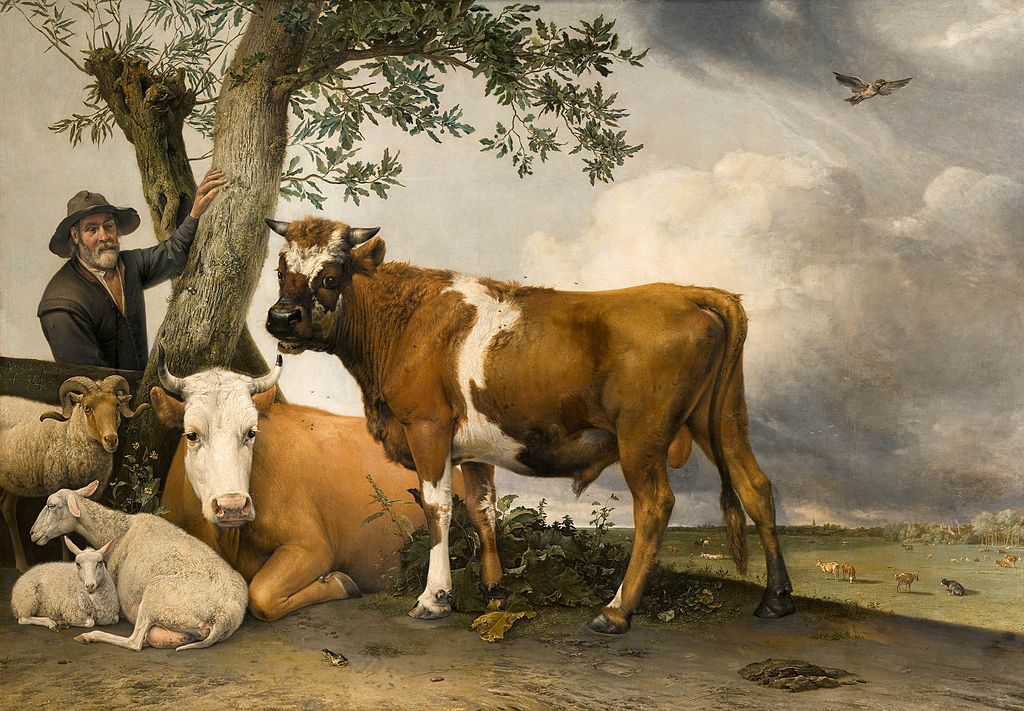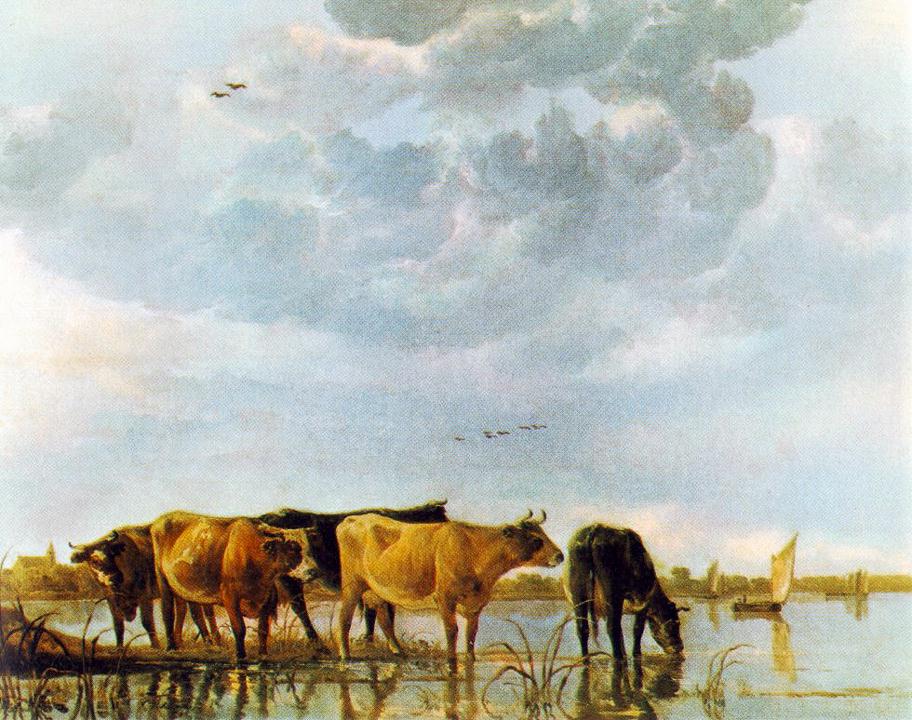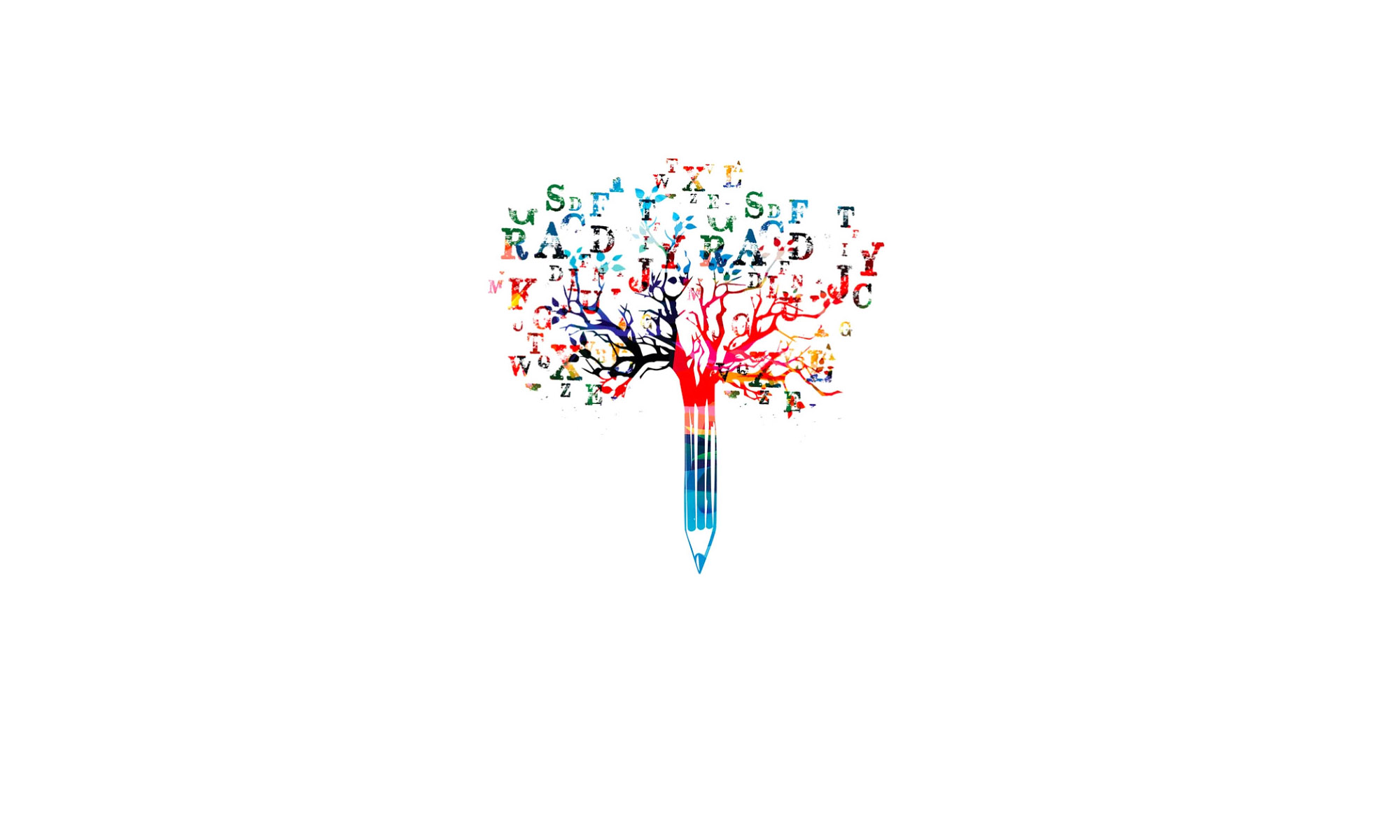Dutch landscape painting, as with the other genres, developed in response to the flourishing Dutch economy and pride in city and country life. Most people lived in the cities (such as Amsterdam, Utrecht, Rotterdam, Haarlem, and The Hague), which gave the countryside a particular attractiveness. Popular subjects to paint were meadows with cows, the wild seacoast with its endless dunes, and all within view of towns with their prominent church steeples. The Dutch climate also played an important role in landscape painting, particularly the ever-present cloud formations and a special light that these produced. Winter landscapes were particularly popular, with the arrival of ‘small ice age’ in the 1600’s, which froze the canals and larger bodies of water. Just as now, everyone took to the ice and there are many wonderful paintings of these scenes (especially by Hendrik Avercamp):

Hendrik Avercamp, Winter Scene on a Canal (1608), Rijksmuseum
The two types of landscapes that I will focus on in this chapter are landscapes with cattle (Potter and Cuyp) and landscapes dominated by cloud formations, most famously painted by Jacob van Ruysdael.
Cows in the Landscape
Paintings that highlighted cattle were an important sub-type of landscape painting, as “the cow was a symbol of prosperity to the Dutch, hitherto overlooked in art, and, apart from the horse, by far the most commonly shown animal’. Pride in livestock is evident in Paulus Potter’s famous The Young Bull, an enormous portrait (235x339cm) so impressive that Napoleon couldn’t resist taking it to Paris, where it hung for 20 years in the Louvre, before it was eventually returned. Notice the painstaking detail, from the bull’s moist nose, to the village and church spire in the distance (Rijswijk), to the cows, horses, and sheep in the fields, to the ubiquitous cloud formations that dominate the entire painting. Indeed, the Dutch landscape provided very rich material for painters and this became one of the important genres in the developing art scene in the Golden Age.

Paulus Potter, ‘The Young Bull’ (1647), Mauritshuis, The Hague
Aelbert Cuyp’s paintings of cattle in the landscape are large panoramas where the countryside is bathed in an unusually warm light that reflects off the fields and its groupings of cows, and the ever-present water, romanticizing the landscape as a whole.

Aelbert Cuyp, Cows in a River (1650)
Both of these artists and their oeuvres are the subject of Robert Lowell’s poem “The Bull”. This remarkable poem goes far beyond these paintings to consider them in the context of their own time and place as well as in an historical setting that takes us beyond these fields and these cows to other times and places.
Robert Lowell (American poet, 1917-1977)
The Bull ‘Anne Boleyn’
The cows of Potter and Albert Cuyp are timeless;
in the depths of Europe, scrawly pastures
and scrawlier hamlets unwatered by paint or Hegel,
the cow is king. None of our rear-guard painters,
lovers of nature and haters of abstraction,
make an art of farming. With a bull’s moist eye,
dewlap and misty phallus, Cuyp caught the farthest glisten,
tonnage and ruination of the sod….
There was a whiteness to Anne Boleyn’s throat,
shiver of heresy, raison d’etat,
the windfall abandon of a Giorgione,
Renaissance high hand with nature – only the lovely,
the good, the wealthy serve the Venetian, whose art
knows nothing yet of husbandry and cattle.
(From Collected Poems, London: Faber & Faber, 2003)
In getting to grips with this somewhat puzzling sonnet, it helps to understand its structure: ‘The Bull’ follows the Petrarchan sonnet form, which divides the poem’s 14 lines into two groups: the “octave” (8 lines) and the “sestet” (6 lines). Typically, the octave introduces a theme or problem, and the sestet (final 6 lines) offers some kind of counter-argument, clarification, or other kind of response. This change of direction occurs between the 8th and 9th lines and is called a ‘turn’ or ‘volta’. Let’s have a look at what Lowell does with this sonnet form in his response to Dutch Landscape painting. The first 8 lines are filled with generalizations – notice how the poet uses plural nouns throughout (cows, pastures, hamlets) – in other words, he is referring to the entire genre, using Potter and Cuyp as examples. (Yacobi’s ‘one-to-many ekphrasis, where one poem addresses many painting). There is a unique and culturally-specific quality of such works, arising from what Lowell presents as a somewhat backward country that is culturally ‘unwatered’ by a long aesthetic tradition or philosophy, (line 3). This is a clear comparison to the enormous artistic output of the Italian Renaissance. Yet there is something noble in an artwork that could raise the cow to the central subject of a painting – a significant departure from the traditionalists or ‘rear-guard painters’ . Indeed, in the canvases of Potter and Cuyp, cows in the landscape seem to represent something beyond themselves: the prophecy that trade and exploitation will ruin the natural fertility of the land, and that the cattle glorified here will become mere ‘tonnage’ in the marketplace.
In the first octave, the poem is meditative in nature, as it does not focus on details of the paintings that are named but more on their (art)historical significance. But now Lowell makes a curious turn, or ‘volta’ – which cause a bit of double-take on the reader’s part. Line 9 changes direction to focus on the ‘whiteness’ of Anne Boleyn’s throat’, Venetian Renaissance painter Giorgione’s moody scenes, and the ‘deserving’ subjects of Venetian art – and hereby placing the spoilt, southern European societies of the High Renaissance in contrast to the aesthetic and also agricultural/trade developments in Northern Europe.
Note 1: I’m still working out the Anne Boleyn part. Her ‘white throat’, which was so wonderfully represented in portraiture, was severed in her execution – widely considered to have been barbaric and unwarranted punishment. Lowell’s volta might be an implied comparison with this kind of barbarism as opposed to cultural backwardness. BBC History Magazine notes the following about that event:
On the morning of 19 May 1536, Anne Boleyn climbed the scaffold erected on Tower Green, within the walls of the Tower of London. She gave a speech praising the goodness and mercy of the king, and asked those gathered to pray for her. Then she removed her fine, ermine-trimmed gown, and knelt down – and the expensive French executioner that Henry VIII had ordered swung his sword and “divided her neck at a blow”. Her death is so familiar to us that it is hard to imagine how shocking it would have been: the queen of England executed on charges of adultery, incest and conspiring the king’s death. And not just any queen: this was the woman for whom Henry VIII had abandoned his wife of nearly 24 years, waited seven long years to wed, and even revolutionised his country’s church. Yet just three years later her head was off – and the reason for her death remains one of the great mysteries of English history. (http://www.historyextra.com/magazine-issue/april-2013/)
Note 2: I wonder if the fact that Napoleon swiped ‘The Bull’ and took it with him to Paris where it hung in the Louvre for 20 years, might have prompted Lowell’s uncomfortable juxtaposition of Dutch and French/Italian culture in the poem. It’s just wild conjecture on my part, but I rather like the idea ….
Jacob van Ruysdael
Although many artists of the Golden Age included landscape painting in their ouevres, Jacob van Ruysdael was one of the most famous landscape painters of the time, and ‘the foremost exponent of the classical phase of Dutch landscape painting. He was able to create a poetic and sometimes brooding or tragic mood in his landscapes.’ (www.nationalgallery.org.uk).

Ruysdael’s art reflected the wealth and changes to the land that occurred during the Dutch Golden Age and, according to Simon Schama, “it can never be over-emphasized that the period between 1550 and 1650, when the political identity of an independent Netherlands nation was being established, was also a time of dramatic physical alteration of its landscape” (An Embarrassment of Riches). Ruysdael’s huge ‘cloud-scapes’ represent this new-found fascination with the Dutch countryside and its dramatic climate.
The following poem by Henry van Dyke shares a similar sense of wonder at the magnificence of the ever-changing cloud formations that hover over the Dutch landscape. The subject is not directly evident in the title of the poem nor in its first three stanzas. It might be helpful to point out that the poem is an ‘extended metaphor’ (also known as a conceit or sustained metaphor, where a single metaphor is used throughout a poem or story.) It is also an ‘implied metaphor’, which is a comparison of two unlike things, without mentioning one of them. On that note, enjoy reading Van Dyke’s rollicking and lyrical ‘panegyric’ to the Dutch Landscape.
‘The Heavenly Hills of Holland’
(Henry van Dyke)
The heavenly hills of Holland –
How wondrously they rise
Above the smooth green pastures
Into the azure skies!
With blue and purple hollows,
With peaks of dazzling snow,
Along the far horizon
The clouds are marching slow.
No mortal foot has trodden
The summits of that range,
Nor walked those mystic valleys
Whose colors ever change;
Yet we possess their beauty,
And visit them in dreams,
While the ruddy gold of sunset
From cliff and canyon gleams.
In days of cloudless weather
They melt into the light;
When fog and mist surround us
They’re hidden from our sight;
But when returns a season
Clear shining after rain,
While the northwest wind is blowing,
We see the hills again.
The old Dutch painters loved them,
Their pictures show them clear –
Old Hobbema and Ruysdael,
Van Goyen and Vermeer.
Above the level landscape,
Rich polders, long-armed mills,
Canals and ancient cities, –
Float Holland’s heavenly hills.
Van Dycke’s images of the Dutch landscape and its intense and changing colours (such as ‘the ruddy gold of sunset’) can be found in many paintings, particularly in Cuyp’s (see ‘Cows in a River’, above). But if Van Dycke has borrowed his imagery from paintings of the Dutch landscape, the link to the artists is only clear in the final stanza. This stanza is quite general, but calls to mind the general characteristics of the genre (‘rich polders, long-armed mills/ canals and ancient cities,-/’ and, of course, the ever-present ‘heavenly hills’. The poet directly names four of the genre’s most famous artists (‘Old Hobbema and Ruysdael/ Van Goyen, and Vermeer’) – which is a one-to-many approach. The poem, through its vivid imagery, gives us a good sense of the landscape, but this is what most good poems do; this isn’t ekphrasis. Nevertheless, the final stanza is ekphrastic. By naming some of the artists, particular paintings by these artists will come to mind – but only for people familiar with them. But the overall description is sufficient to give a general idea to most readers of what the paintings included. Finally, we might also say that, since the entire poem focuses on particular elements of the landscape that have been represented by the 4 artists mentioned, as well as stresses an intensity of colours – the poem can be called associative (Differential Model), ie: it is interested primarily in a the landscape as a genre (or topos). The poem, though highly descriptive of the elements that would have influenced Dutch landscape painters, is only mildly ekphrastic in its references to specific artworks. That’s ekphrasis for you ….
Moving from Landscape Painting to ‘Genre Painting, the next (and final) part of this chapter will look at the lively ‘party’ scenes painted by Jan Steen and one very irreverent poem by Philip Larkin.
